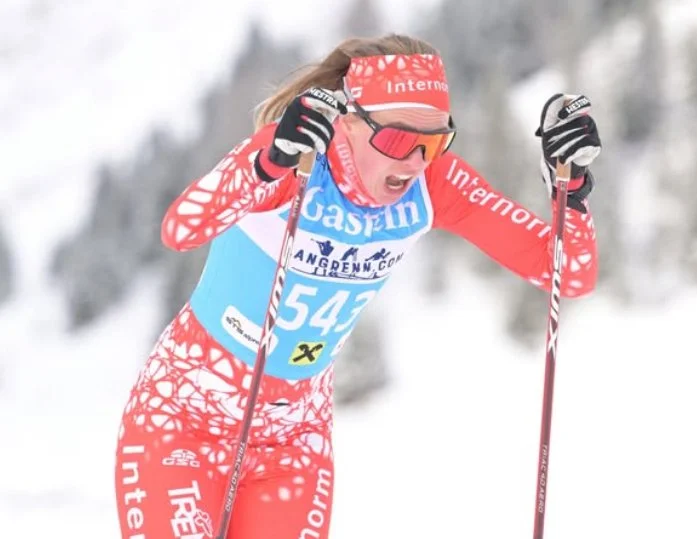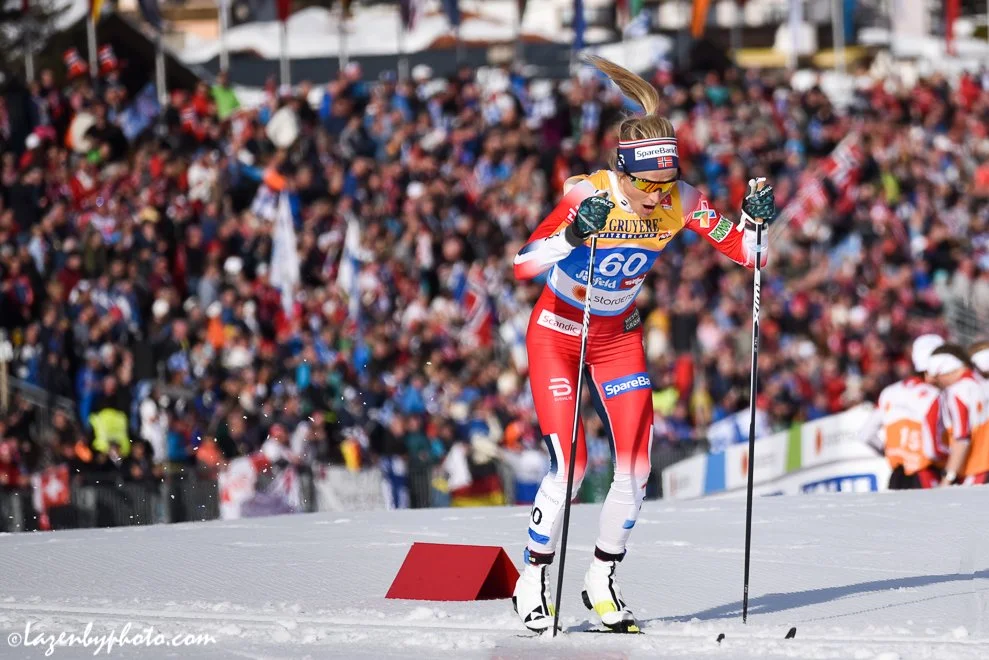Double Poling: The Basics for Beginners to Professional by Malin Börjesjö
Malin Borjesjö has had an impressive and long career in Nordic skiing. A former Swedish Junior Nordic Skier for seven years, she transitioned to competing for Northern Michigan University in Marquette, Michigan, before returning to Sweden to pursue a master's degree. Along the way, she became a formidable presence in the legendary Ski Classics series, racing for the Italian team Internorm. After graduating, she continued her professional skiing career, as she currently works in Consulting, and is coaching with XC STHML, a Ski Club in Stockholm, Sweden. Malin has studied Math, Data Science, and Engineering.
Her accomplishments include a standout 6th place finish at the 2021 NCAA Championships, a 16th place in the 2018 Ulricehamn Freestyle Sprint against Sweden's elite national team, and an impressive four wins in the Ski Classics. With success at every level of the sport, Malin continues to carve out her name in Nordic skiing.
Double Pole - the basics for beginners to professional long distance skiers
Malin Borjesjö
The future of skiing is here, or has been for the last 15(?) years. But not until lately has double poling (DP) posed a threat on traditional skiing to such a big extent so that double pole free zones (2016/2017) and limited pole heights (2016/2017) had been implemented to preserve the traditional classic technique. Although these implemented measures, the double poling technique has been optimized as never before and athletes have achieved great results using DP gear in traditional racing. Of course no one will yet win world championships using double poling with the current restrictions, but who knows how it will look in the future. What is sure is that sharpening your DP skills will make you a faster skier.
Borjesjö - the Winner of the 2025 Vasaloppet China
As a educated engineer, i like to see skiing as a output of a function. I know, it is a bit nerdy, but bare with me this makes sense! The input is power and cadence. Compare two very different athletes, Therese Johaug and Daniel Rickardsson (now retired). Therese Johaug is 162cm and weighs 46kg and Daniel Rickardsson is 192cm and weighs 85kg. Both are strong double polers but they ski very differently. Therese is using low power and high cadence while Daniel uses the opposite. This is one main key to unlocking your best double pole technique, see where on this spectrum of power and cadence where you perform best. A great way of doing this is to test different stroke/minute (s/m) when doing intervals on a ski erg or similar. A good session to test is 5*5min where you go from 50-70s/m to see where you feel most at ease, and most importantly, produce the same amount of watts! So keep an eye on the watt-measure to make sure its stable. There you are keeping the output the same but you are changing the power and the cadence to find your optimum.
When finding your optimum you will have an idea what pace is your "go to". This is your base pace and from this you will increase the cadence and reduce the power in uphills and increase the power and reduce the cadence in the downhills.
Enough nerding.
While finding your pace is important, it's at least equally important with the technique. I will start with what you should not do. Don’t ever ski without thinking when you double pole. What will most likely happen is that your upper body and arms will "go out of sync". This happens when you end up in a possition that your upper body is upright but your arms are still on their way upwards in their movement. Nonono. DP requires focus.
I like to say that the DP circle begins in this position
The skier has momentum upwards with both the arm and the upper body, which simultaneously moves to the highest position here,
Where the skier locks the core muscles to create the power of that DP circuit. To optimize the power output there are many small keys to note. The skiier has bent knees throughout the movement to not end up in a position where she looses her core muscles. The under arms is what makes up the movement in the arms and the swing of the pole. In the pole plant, the under arm should have almost parallel position to the pole (not possible in downhill). And to achieve this position the skier needs to have a very aggressive position forward, however, if you think that your underarm needs to be in position for the pole plant the aggressive forward position usually is a consequence.





